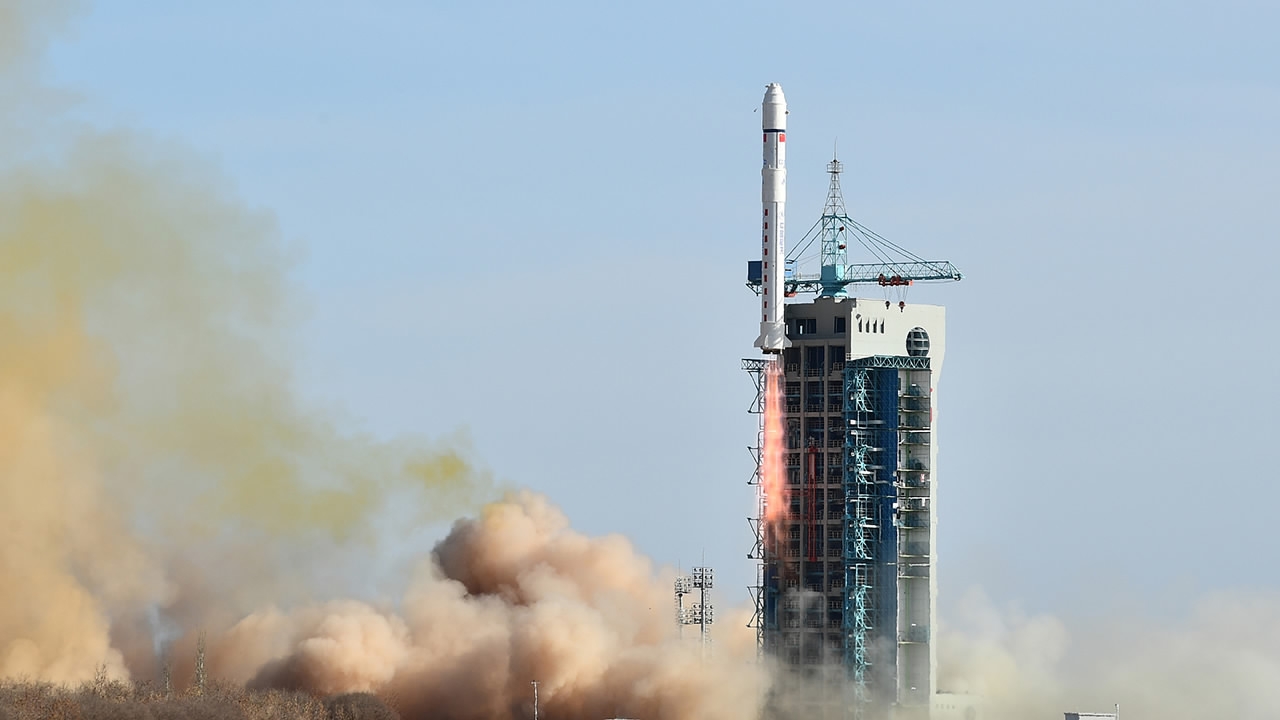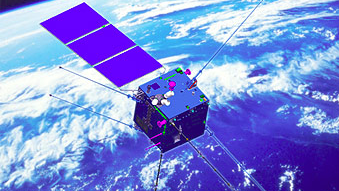
A screenshot from CGTN video shows the launch of Zhangheng 1, a self-developed experimental seismo-electromagnetic satellite, from the Jiuquan Satellite Launch Center in northwest China, February 2, 2018. /CGTN
A screenshot from CGTN video shows the launch of Zhangheng 1, a self-developed experimental seismo-electromagnetic satellite, from the Jiuquan Satellite Launch Center in northwest China, February 2, 2018. /CGTN
Earthquake prediction has always been a challenge globally. It has been hard for scientists to accumulate enough cases of destructive earthquakes for statistics gathering and to validate prediction methods and theories.
Over 1,800 years after Chinese inventor Zhang Heng developed the first-ever seismoscope, scientists are now carrying out research on earthquake forecasting using a satellite named after him.
China plans to launch the Zhangheng 1-02 satellite in the near future, according to a leading Chinese scientist, adding that the new satellite will enable round-the-clock monitoring and extend the observation range to Earth's north and south poles, enhancing its ability to observe changes in Earth's system.
Launched in February 2018, the first China Seismo-Electromagnetic Satellite (CSES), Zhangheng 1, was designed to capture the electromagnetic signals in space, offering support for earthquake forecasting as well as space weather monitoring and warning.
Over the past five years, Zhangheng 1 has observed about 60 quakes of magnitude 7.0 and above, as well as nearly 600 quakes of magnitude 6.0 and above worldwide, according to Shen Xuhui, the chief scientist of the satellite program, highlighting the latest progress of the satellite at the 35th National Symposium on Space Exploration held recently.
"Using the Zhangheng 1, we have obtained global geomagnetic field data and global low-frequency electromagnetic spectrum data, and established two models for the subsequent data research," said Shen.
"We have found that up to 80 percent of earthquakes measuring magnitude 6.0 or higher exhibit precursory signals half a month before the event."
"Satellite monitoring breaks through the limitations of traditional earthquake research," Shen said, adding that statistics showed that electromagnetic disturbances in space are associated with the occurrence of earthquakes.
The Zhangheng 1 satellite enables scientists to extend their observations to global scales and conduct statistical studies with large samples, he added.

A rendering of the Zhangheng 1 satellite. /CSES
A rendering of the Zhangheng 1 satellite. /CSES
Future development
While acknowledging the advances made by the Zhangheng 1 satellite, Shen has conceded that there is still a long way to go before accurate earthquake forecasting can be achieved.
He pointed out that a large number of precursory signals have been identified by backtracking through the data after an earthquake has occurred, and only a small number of precursory signals were detected in advance.
This is due to the complexity of data processing and the inability to track global data in real time with limited human and computing power, he explained.
Moreover, accurate forecasting of the time, location and intensity is not yet possible. The precursory signals detected by satellites often appear several hundred kilometers off the epicenter, Shen added.
"Data from a satellite is far from enough. Earthquake prediction needs multidisciplinary research of seismology, electromagnetics, geodesy and geochemistry," he said.
Despite the current limitations in earthquake prediction, the 58-year-old scientist remains confident about future prospects in this field.
According to him, with the development of information technology such as machine learning, big data and artificial intelligence, people will be able to carry out real-time data processing before an earthquake occurs.
"I believe that in another 10 to 20 years, a breakthrough in earthquake prediction can be expected," Shen said.
Read More:
China launches satellite to forecast earthquakes from space
(With input from Xinhua)